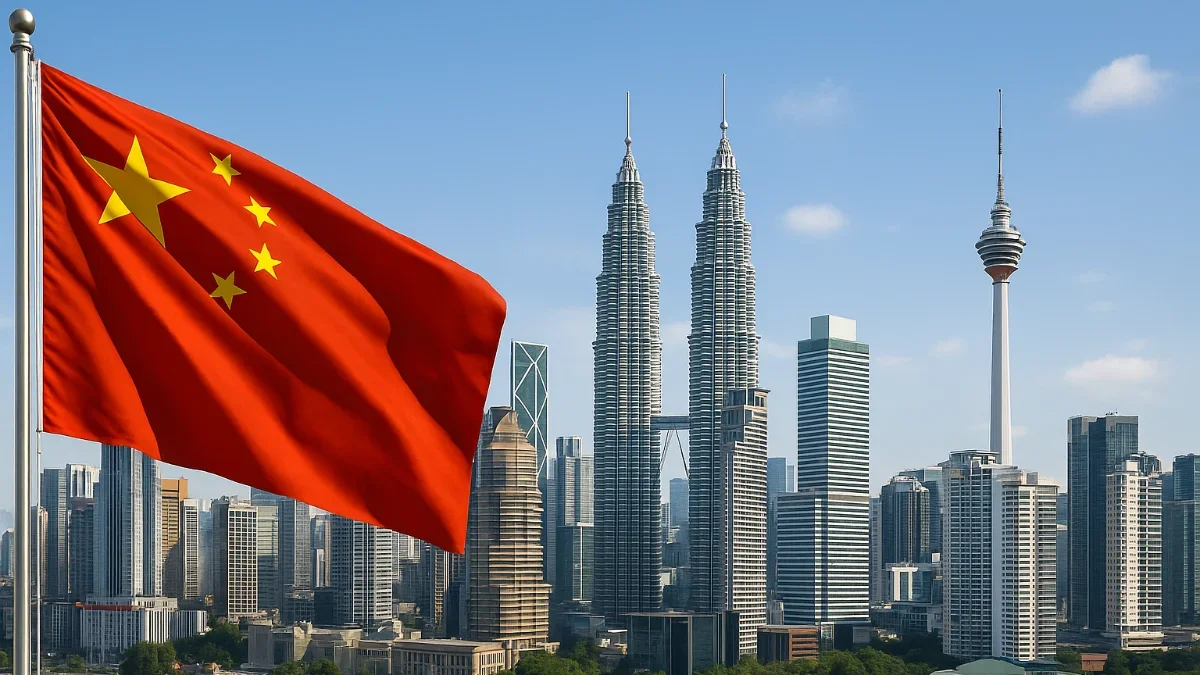The 2025 Malaysia–China visa-free policy is set to boost tourism, trade, and cross-border investment. Learn how easier travel access for Chinese nationals is reshaping Malaysia’s commercial, industrial, and land property markets — from Klang Valley to Johor.
The Impact of Malaysia’s New China Visa Policy on the Commercial Property Market
With Malaysia and China signing a mutual visa-exemption agreement in mid-2025, allowing for easier travel and business links, what are the implications for Malaysia’s commercial and industrial real-estate sectors? Investors need to watch how increased Chinese presence affects demand, pricing and strategic asset allocation.
1. What the Policy Says
On 17 July 2025, Malaysia and China’s mutual visa-exemption agreement came into force, allowing ordinary passport holders to travel between the two countries visa-free for up to 30 days per entry, with cumulative stay up to 90 days within any 180-day period. Prior to this, Malaysia had already extended its visa-free stay for Chinese nationals and agreed to keep the scheme for another five years.
2. Why This Matters for Commercial & Industrial Property
The easing of travel restrictions between China and Malaysia strengthens people-to-people links, business travel, and trade flows. For the commercial property sector in Malaysia — especially in the Klang Valley and other key logistics/industrial hubs — this shift impacts in multiple ways:
- Increased Chinese Investor Interest – With easier access, Chinese investors and businesspersons may look more actively at Malaysian commercial assets, joint ventures, logistics hubs, warehouses, and supply-chain land.
- Boost to Trade & Logistics Demand – Trade flows between Malaysia and China are strong (China has been Malaysia’s largest trading partner for many years) which suggests that commercial property tied to export/ import/ logistics can benefit.
- Tourism-and-Retail Spillovers – More visitors from China mean stronger retail demand in shopping malls, serviced offices, hotels and commercial strips around tourism nodes — commercial space demand may pick up in those micro-locations.
- Land Value Uplift in Strategic Zones – Locations that can service Chinese-market business (logistics parks, factories, warehouses, export hubs) in areas like Selangor, Klang Valley, Johor may see value appreciation due to enhanced connectivity and foreign interest.
3. Key Risks & Considerations for Investors
As with any policy-driven shift, there are caveats investors should keep in mind:
- Stay Duration Limits – The visa-exemption covers short-term stays (max 30 days per entry, 90 within 180) and does not cover employment or long-term residence. This means long-term business setups or permanent operations still need proper visas and work permits.
- Oversupply Potential – If multiple investors chase the same nodes (logistics parks, warehouses, commercial buildings in fringe zones), there is a risk of oversupply and yield compression. Investors should differentiate by location, tenant profile and infrastructure connectivity.
- Domestic-Foreign Demand Balance – While foreign (Chinese) interest may rise, domestic investor demand remains critical. Assets must appeal to both local and foreign players to remain resilient.
- Infrastructure & Zoning Must Align – Proximity to ports, highways, export corridors, and industrial zones remain key. A lifted visa policy alone does not guarantee value unless the physical / logistic fundamentals are present.
4. Strategic Moves for Commercial Property Investors in 2025-26
Here are actionable strategies tailored for your investor/industrial buyer audience:
- Target properties in zones with strong China-Malaysia trade ties or export/ logistics functions (e.g., Selangor, Johor, Port Klang corridor).
- Look for assets that can serve dual-purpose: industrial/logistics + commercial/retail front (for Chinese tourist/visitor spillover) — e.g., warehouse + showroom, retail plaza + logistics hub.
- Negotiate terms with awareness of foreign investor needs: international tenant fit-out, Mandarin-friendly amenities, connectivity to Chinese freight/air/sea networks.
- Monitor policy developments: whether the visa-exemption window gets extended, whether incentives for Chinese B2B investment appear (tax breaks, special zones).
- Ensure risk mitigation: check supply pipelines, tenancy profile (local vs foreign), lease escalation clauses, and test sensitivities to tenant departure or drop in Chinese-visitor demand.
5. Outlook: What to Expect in the Market
With the visa-exemption policy now in force, the commercial property market in Malaysia is entering a phase where access + demand could align to uplift certain segments. For 2025-26, we expect:
- Heightened demand in industrial/logistics parks that serve China-Malaysia trade flows.
- Retail and hospitality assets in tourism-heavy zones picking up incremental demand thanks to Chinese arrivals.
- Land/cluster-factory parcels near export corridors to see value uplift, especially if Chinese buyers or joint-ventures enter.
- However, not a blanket boom — locations lacking connectivity or tenant diversity may lag, and foreign engager tenancy must still meet host country regulations.
For investor-clients of Terra Group looking at commercial or industrial assets, this policy shift provides a timely lens: value lies where international connectivity, trade flows and tenant readiness converge. Combine location discipline, tenant strategy, and foreign-market alignment to capture the uplift while managing the risks.
Start Your Search for Commercial, Industrial or Land Investment
- Explore Agricultural and Development Land for Sale
- Browse Industrial Properties in Rural Areas
- See Commercial Assets Supporting Agri-Supply Chains
For consultation on commercial/industrial assets aligned with China-Malaysia trade flows, contact Kenneth at 017-380 9993 or visit TerraGroup.my.



